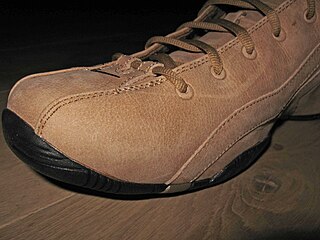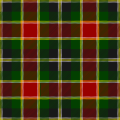Related Research Articles

The Parthenon is a former temple on the Athenian Acropolis, Greece, that was dedicated to the goddess Athena during the fifth century BC. Its decorative sculptures are considered some of the high points of classical Greek art, an enduring symbol of Ancient Greece, democracy and Western civilization.

Suede is a type of leather with a fuzzy, napped finish, commonly used for jackets, shoes, fabrics, purses, furniture, and other items. The term comes from the French gants de Suède, which literally means "gloves from Sweden". The term was first used by The Oxford English Dictionary in 1884.

Robert Livingston the Elder was a Scottish-born merchant and government official in the Province of New York. He was granted a patent to 160,000 acres of land along the Hudson River, becoming the first lord of Livingston Manor.

Gyros, sometimes anglicized as a gyro in some regions, is meat cooked on a vertical rotisserie, then sliced and served wrapped or stuffed in pita bread, along with other ingredients such as tomato, onion, fried potatoes, and tzatziki. In Greece, it is normally made with pork or sometimes with chicken, whilst beef and lamb are also used in other countries.

Serge is a type of twill fabric that has diagonal lines or ridges on both inner and outer surfaces via a two-up, two-down weave. The worsted variety is used in making military uniforms, suits, greatcoats, and trench coats. Its counterpart, silk serge, is used for linings. French serge is a softer, finer variety. The word is also used for a high-quality woven woolen fabric.

Flannel is a soft woven fabric, of varying fineness. Flannel was originally made from carded wool or worsted yarn, but is now often made from either wool, cotton, or synthetic fiber. Flannel is commonly used to make tartan clothing, blankets, bed sheets, and sleepwear.

Frank Lovece is an American journalist, author, and a comic book writer primarily for Marvel Comics, where he and artist Mike Okamoto created the miniseries Atomic Age. His longest affiliation has been with the New York metropolitan area newspaper Newsday, where he has worked as a feature writer and film critic.

Nubuck is top-grain leather that has been sanded or buffed on the grain side, or outside, to give a slight nap of short protein fibers, producing a velvet-like surface. It is resistant to wear, and may be white or coloured.

Josh Kilmer-Purcell is an American writer, businessperson, and television personality. In addition to his New York Times and National Bestselling memoirs, his life has been documented in the television reality show The Fabulous Beekman Boys with his husband, Brent Ridge. He has written articles for NPR, Huffington Post, Publishers Weekly, AdWeek, OUT Magazine & others. The pair also participated in the 21st season of The Amazing Race, ultimately becoming the season's grand prize winners.
Beekman Place is a small street located in the Turtle Bay neighborhood on the East Side of Manhattan, New York City. Running from north to south for two blocks, the street is situated between the eastern end of 51st Street and Mitchell Place, where it ends at a retaining wall above 49th Street, overlooking the glass apartment towers at 860 and 870 United Nations Plaza, just north of the headquarters of the United Nations. "Beekman Place" also refers to the small residential enclave that surrounds the street itself. It is named after the Beekman family, who were influential in New York City's development.

In the history of textiles, frieze is a Middle English term for a coarse woollen, plain weave cloth with a nap on one side. The nap was raised by scrubbing it to raise curls of fibre, and was not shorn after being raised, leaving an uneven surface.

Primarily, nap is the raised (fuzzy) surface on certain kinds of cloth, such as velvet or moleskin. Nap can refer additionally to other surfaces that look like the surface of a napped cloth, such as the surface of a felt or beaver hat.

The Beekman Tower, also known as the Panhellenic Tower, is a 26-story Art Deco skyscraper situated at the corner of First Avenue and East 49th Street in Midtown Manhattan, New York City. The building was constructed between 1927 and 1928 and was designed by John Mead Howells.

Brent Ridge is an American physician, business owner, and reality television participant. He was formerly the Vice President of Healthy Living for Martha Stewart Omnimedia.
Seerhand muslin (Seerhand) was a plain weave thin cotton fabric produced in the Indian subcontinent.
Bure was an old heavy woolen woven cloth that has undergone many changes since the Middle Ages. Hence, It was called with many names such as Bura, Burel, Burian, Burly, Burlesque, Burratto, Bournous, Burratine.
Swansdown was a fancy woolen material of the 19th century. It was a soft mix of wool and silk used for waistcoats. Wool was the primary fiber, blended with silk, and later with cotton. Waistcoats Made of toilinet and swansdown were popular with equestrians.
Bay was a napped coarse woolen cloth, introduced to England by Dutch immigrants in the 16th century. It was produced in Essex at Colchester and Bocking, and also in various towns in the West of England. Production continued until the 19th century.
Alamode (Allamod) was a thin, soft, fine, and lustrous silk material. It was one of England's local silk varieties. However, it was recognized as ''Alamode'' in the early 17th century before it was famous for its use in scarves.
References
- 1 2 3 Montgomery, Florence M. (1984). Textiles in America 1650-1870 : a dictionary based on original documents, prints and paintings, commercial records, American merchants' papers, shopkeepers' advertisements, and pattern books with original swatches of cloth. Internet Archive. New York ; London : Norton. p. 331. ISBN 978-0-393-01703-8.
- ↑ Bly, Antonio T.; Haygood, Tamia (2014-12-24). Escaping Servitude: A Documentary History of Runaway Servants in Eighteenth-Century Virginia. Lexington Books. p. 426. ISBN 978-0-7391-9275-7.
- ↑ White, Philip L. (1956). The Beekmans of New York in Politics and Commerce, 1647-1877. New-York Historical Society under a grant from the Beekman Family Association. p. 653.


